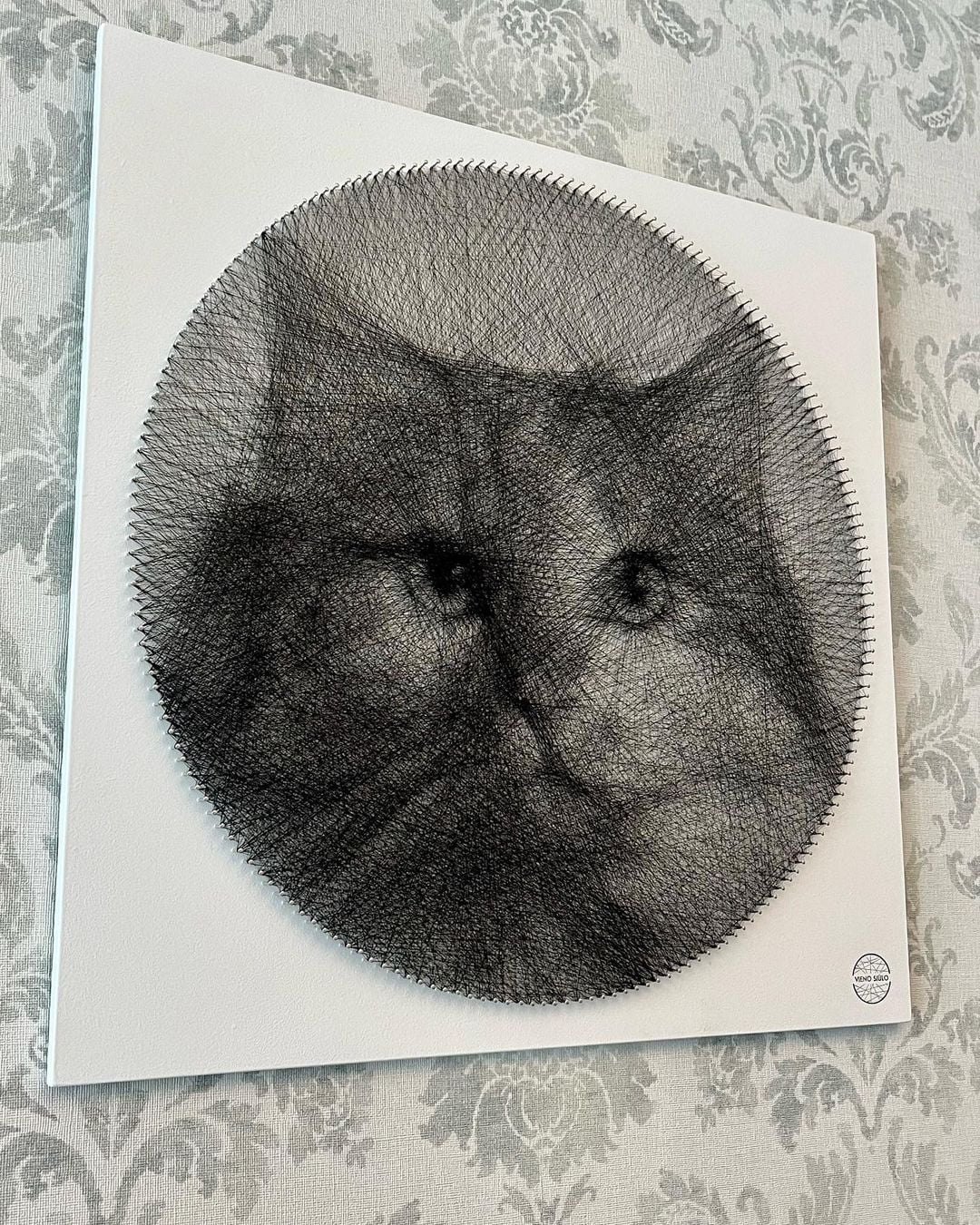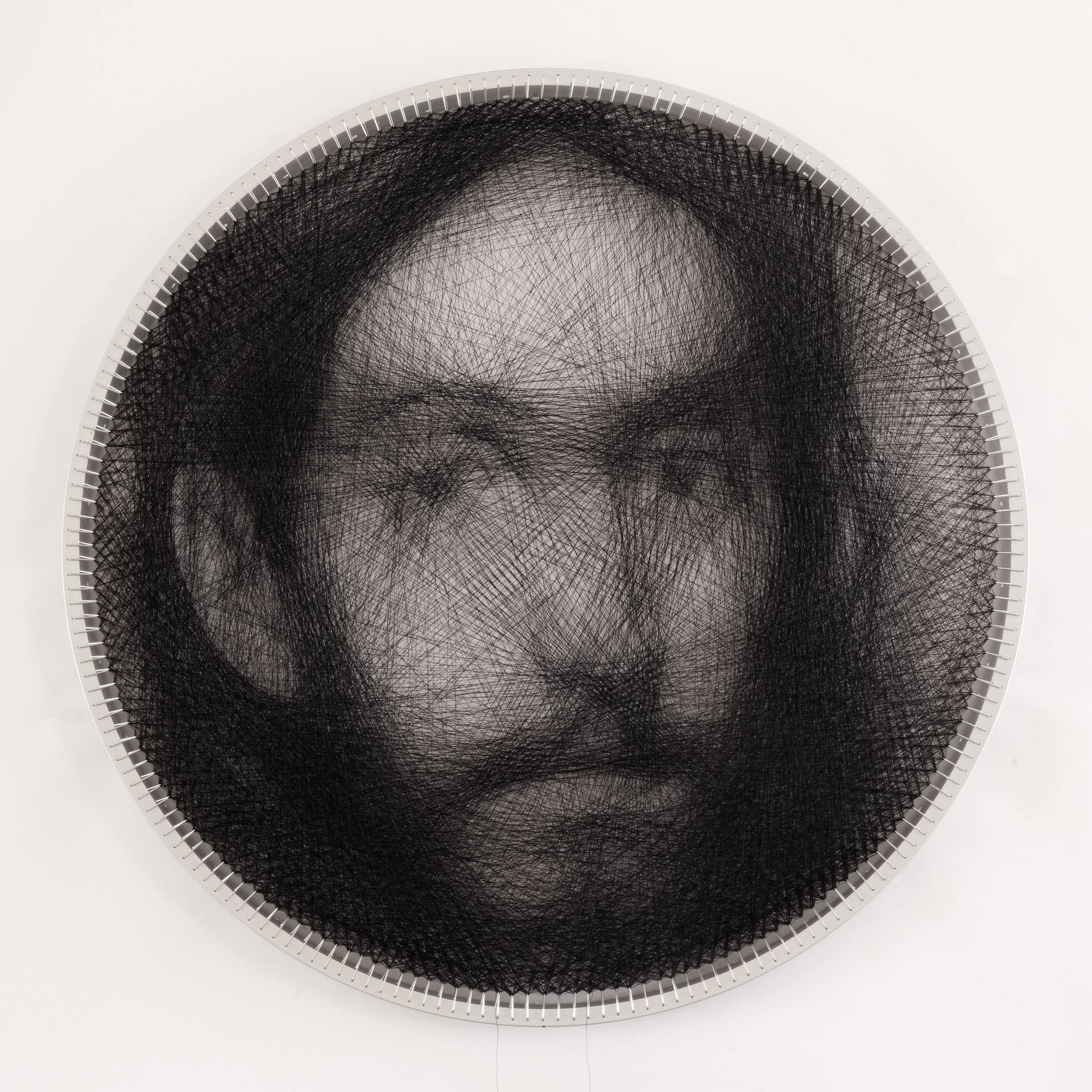In this case, we are talking specifically about portraits of people and animals made of nails and thread. These masterpieces, which combine the simplicity of thread art with the complexity of portraiture, evoke a sense of wonder and admiration in every viewer. Let’s immerse ourselves in the world of single-thread portraits and discover the beauty created using only these rather primitive creative tools!
The origins of thread art and how such portraits came about
The art of thread has a rich history dating back centuries. It originated in ancient civilisations, including the Egyptians and the Chinese, who used cords to create intricate patterns on textiles. However, in the 19th century, the art of threading gained popularity as a recreational craft. It became particularly popular in Europe, where mathematicians and artists found inspiration in the interplay between geometric patterns and thread.
While traditional thread art often focuses on abstract patterns and shapes, the concept of thread portraits pushes the boundaries of the art form. Artists have begun experimenting with thread to create lifelike images of people, capturing their expressions, emotions and unique features with surprising accuracy. By manipulating the tension and direction of the thread, they bring their subjects to life, immersing viewers in a world of complex lines and contours.
As we mentioned in our previous post, the Greek artist Petros Vrellis is the main pioneer in this field, and it was he who discovered the algorithm that makes it possible to create spectacular-looking images from a single thread.
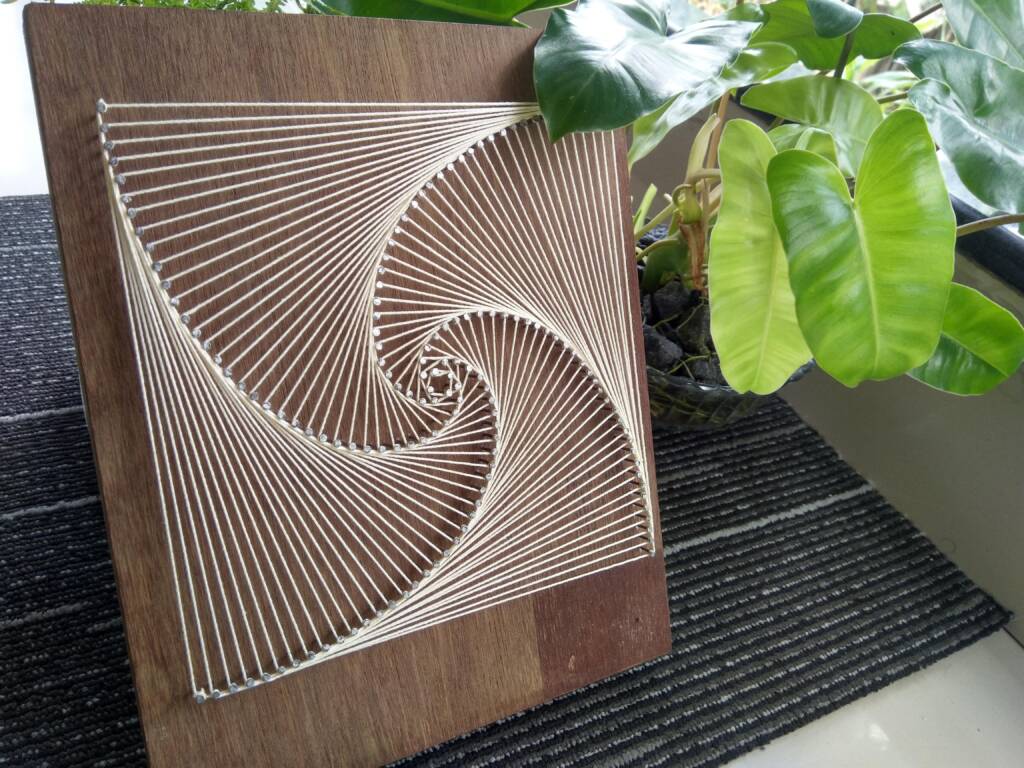
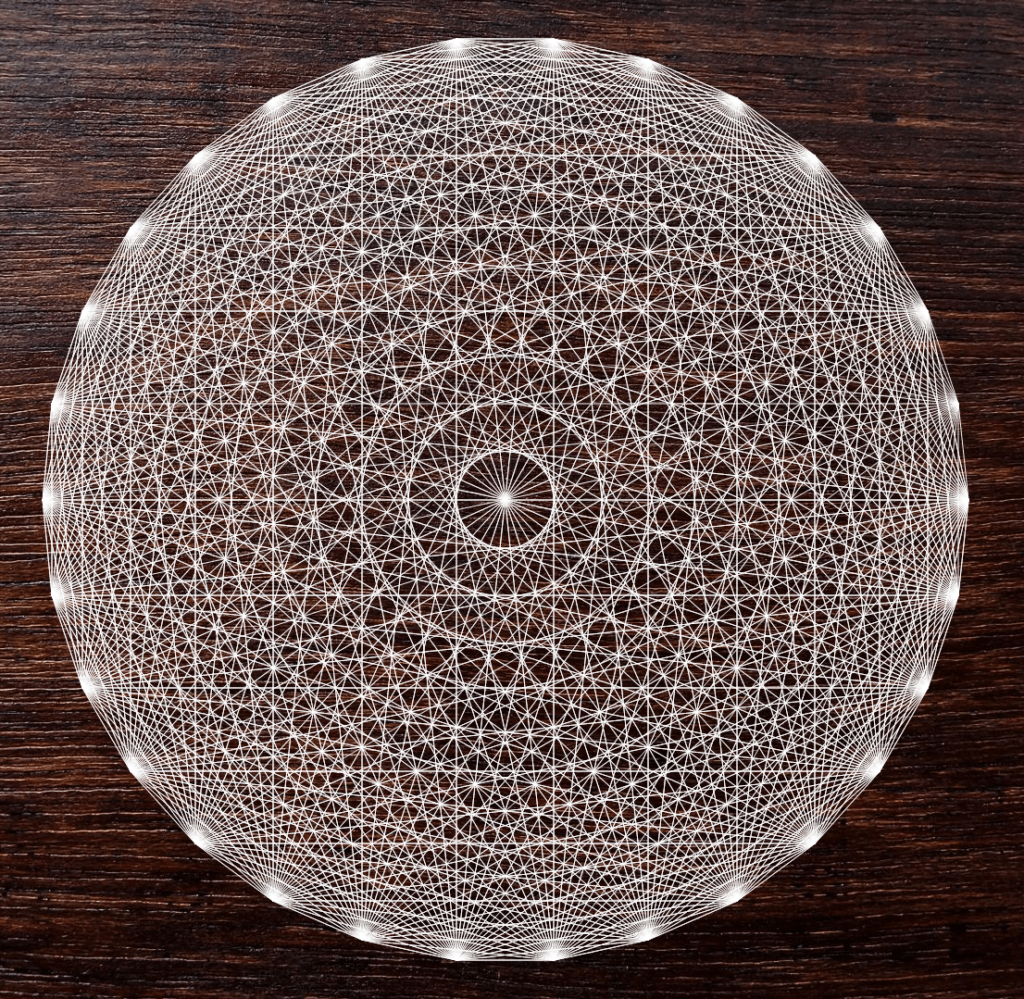
How single thread portraits are created
The portrait of one thread requires careful planning, patience and a keen eye for detail. We start with a reference image, usually a photograph, which guides us throughout the process. The photo is then processed and properly prepared in Photoshop. The algorithm is then experimented with – if the resulting visualisation is not satisfactory, the photo has to be prepared again.
Despite the “game” with the photo, we also need to prepare the base on which we will hammer the nails later. The base is scrubbed and painted with white, harmless paint and the hanging rope is attached on the other side. This is followed by the nailing stage, where the nails are hammered into a smooth circle, usually using 200 nails.
Everything is ready – the main thing left is to sculpt the image by hand 🙂 This process takes about 6 to 8 hours.
The stunning beauty of one of the portraits in the thread
Portraits from a single thread have a unique aesthetic appeal, combining realism with abstraction. They have an otherworldly quality that draws the viewer closer, enticing them to explore the interplay of light and shadow, subtle curves and intricate details. The simplicity of a single thread becomes a powerful tool in the hands of the artist, transforming a simple tool into a fascinating work of art.
Beyond their visual charm, the portraits in one thread have a deeper meaning. They remind us of the interconnectedness of life, of how the individual threads come together to form the fabric of our existence. Each thread is a story, a unique journey and a shared humanity.

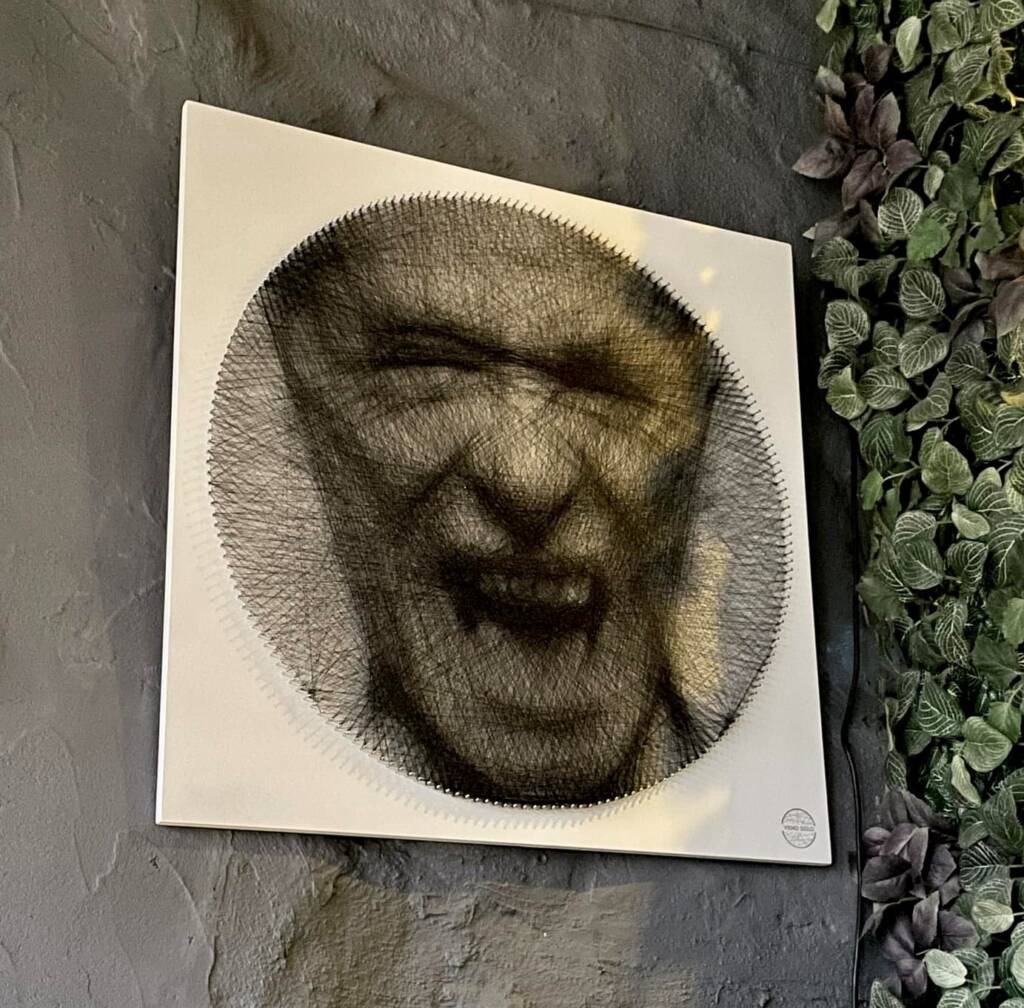
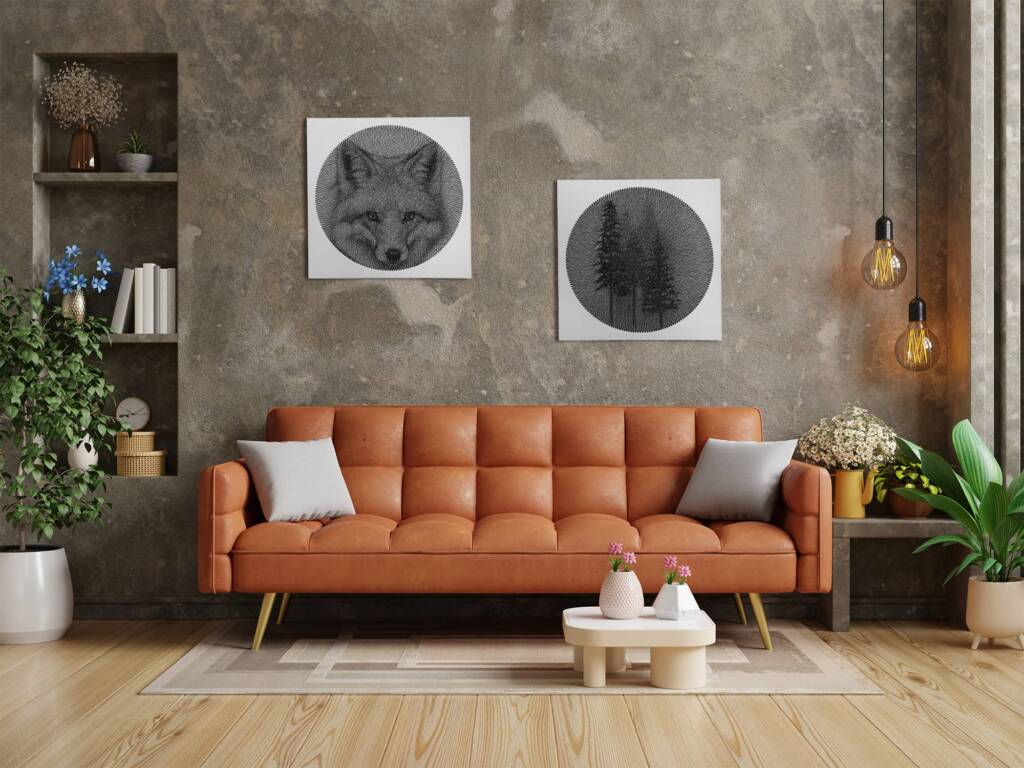
Growing popularity
In recent years, portraits have become very popular, attracting the attention of art enthusiasts and collectors around the world. With social media platforms giving artists the opportunity to showcase their work, these intricate pieces have reached a wider audience, captivating viewers with their extraordinary beauty.
Contemporary artists are pushing the boundaries of portraiture by experimenting with different materials, incorporating mixed media and exploring different styles. This constant evolution ensures the vitality of the art form, allowing it to adapt and flourish in the contemporary art scene.
We, the Vieno Siūlo team, were the first in Lithuania to create paintings using this highly skilled technique, and we carry out individual commissions. So don’t miss the opportunity to order a unique piece of art for yourself or as a gift. We promise – you will be very pleasantly surprised! 🙂


